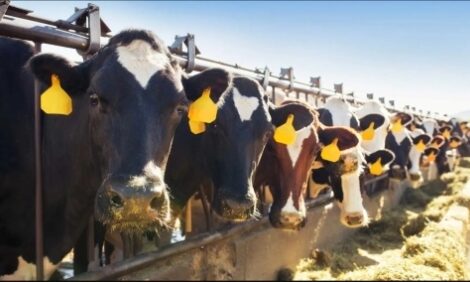



Heifer Rearing Problems Flagged Up at Science Conference
UK - Many UK dairy cows are being culled before they pay back heifer rearing costs and standards of heifer rearing could be partly to blame, suggests recent research.Nutrition and welfare issues in early life are detrimental to cow longevity, meaning that a considerable amount of heifers are culled before they pay off the cost of rearing, says the Royal Veterinary College (RVC).
Almost a quarter of heifers die before calving and a further 20 per cent are culled during the first lactation.
Across a study of 100 farms, the RVC reported insufficient milk replacer volumes, low observation times and non-compliance on government welfare regulations on a significant number of farms.
“An awfully large percentage of heifers are not paying off their rearing costs,” said Dr Alana Boulton, addressing the British Society of Animal Science conference in Chester this week.
The conference was told that raising awareness to best practice would improve calf health and welfare.
Discussing two separate studies, Dr Boulton, along with Professor Claire Wathes, discussed how sub-optimal calf management could be hurting farm profits.
The RVC concluded that heifer rearing is a “secondary consideration” on many farms.
In a study of over 100 UK farms, the RVC found an average break-even point came at around 530 days after first calving, around 1.5 lactations.
A fifth of farms paid off their cost of rearing within the first lactation, with 90 per cent reaching this point by the end of the second.
Industry figures show an average UK cow manages 3.5 lactations.
Dr Boulton stressed that the study was done in the summer of 2013, when milk prices were around the 30 pence per litre mark.
Which Farms Lose Out?
“The concern is for farms not breaking even after the third lactation because there is a real chance the cow is not making a profit for them,” said Dr Boulton.
Factors with the biggest effect on paying off rearing costs were age at calving and fertility.
She said that, while most farms were calving at 24 months, those calving one month later saw costs go up seven per cent. Costs were 18 per cent higher for cows calving at 27 months.
“Fertility also matters – this extends the dry period and the non-productive periods,” said Dr Boulton. “Age at first calving obviously has a massive effect on cost.”
Variation Between Farms
Professor Wathes stressed that standards of calf rearing varied greatly in terms of feed, hygiene, vaccinations and weaning strategy.
She noted the lack of attention that some calves received.
“Farms averaged two minutes per heifer a day,” she said. “Some managed as high as 12 minutes, some less than one minute.”
“It raises questions about the health of animals if all people can do is glance at each one.”
“Weaning days averaged 62, some were as high as 112 and some managed 42 days.”
“While most farms followed industry and government guidelines on rearing youngstock during the pre-weaning period, compliance on government regulations relating to the administration of anaesthetic prior to dehorning and provision of water from birth was not practiced on 15 and 60 per cent of farms respectively.”
Importance of Early Life
Professor Wathes said an average milk replacer volume of 4.58 litres per day was not enough to hit target growth rates of 750 grams per day.
She added: “Management of the pre-weaning period is extremely important as it will determine the heifer’s future production potential and lifetime spent in the milking herd.
“The calf undergoes critical physiological changes during this time and is most susceptible to infections that cause enteric and respiratory disease.”
Michael Priestley
News Team - Editor
Mainly production and market stories on ruminants sector. Works closely with sustainability consultants at FAI Farms



